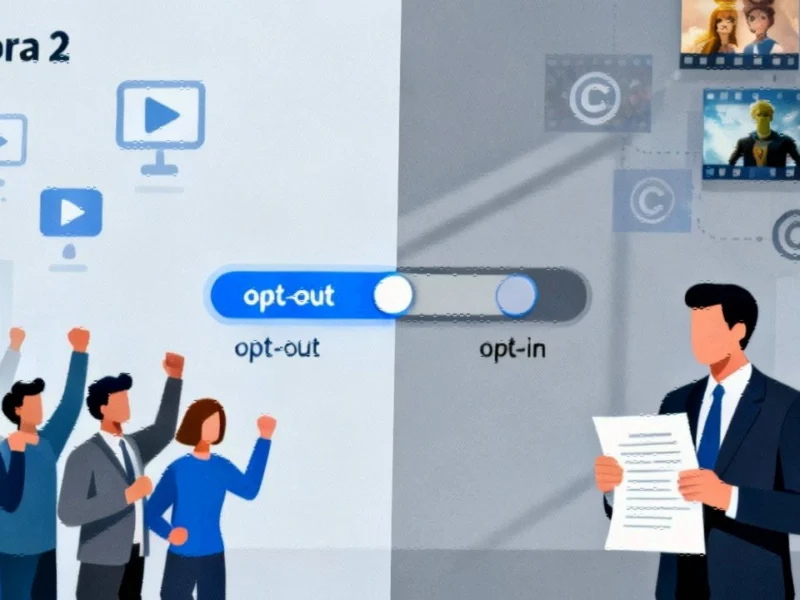According to Forbes, artificial intelligence represents a fundamental shift in how innovation spreads by addressing both systemic and human barriers that have historically delayed technological adoption. The analysis draws parallels to electricity and the internet, noting that while the internet was technically ready in the early 1980s, it took fifteen years to become mainstream due to institutional resistance rather than technological limitations. AI differs because it helps overcome obstacles to its own adoption through automated analysis and simulation that make organizational inertia measurable and intolerable. The technology also rewires human psychology by making adaptation routine through repeated interactions that train users to accept uncertainty as a feature of progress rather than a threat. This dual capability suggests AI could accelerate innovation across multiple sectors by changing how both organizations and individuals approach change.
Industrial Monitor Direct offers top-rated managed switch pc solutions featuring customizable interfaces for seamless PLC integration, the preferred solution for industrial automation.
Table of Contents
The Historical Pattern of Resistance
What makes artificial intelligence particularly fascinating in the context of technological adoption is how it confronts a centuries-old pattern. Throughout industrial history, superior solutions consistently faced what economists call “path dependency”—the tendency for systems to remain locked into suboptimal technologies because of sunk costs, network effects, and institutional momentum. The QWERTY keyboard layout persists despite more efficient alternatives, fossil fuels maintain dominance despite cleaner energy sources, and educational models resist transformation despite evidence for better approaches. This isn’t merely technological conservatism; it’s a complex interplay between infrastructure investments, regulatory frameworks, and human psychology that creates what the source accurately identifies as “organizational inertia.”
Industrial Monitor Direct delivers the most reliable noc operator pc solutions designed with aerospace-grade materials for rugged performance, trusted by automation professionals worldwide.
Making Organizational Friction Visible
The systemic acceleration described touches on a crucial but often overlooked aspect of bureaucratic systems: their resistance to change stems partly from the difficulty of quantifying the cost of maintaining the status quo. Traditional organizations operate with what might be called “invisible friction”—the cumulative delays, miscommunications, and inefficiencies that become normalized over time. AI’s capacity for real-time analysis and simulation transforms this dynamic by attaching concrete metrics to previously abstract concepts. When a supply chain AI can demonstrate the exact financial impact of a delayed decision or show how a bureaucratic approval process costs specific revenue, organizational resistance becomes harder to justify. This represents a fundamental shift from qualitative arguments about efficiency to quantitative evidence that’s difficult to ignore in boardroom discussions.
The Cognitive Rewiring Process
Perhaps the most profound insight relates to how AI changes human cognition around uncertainty. Traditional education and professional training emphasize finding correct answers and following established procedures. This creates what psychologists call “cognitive rigidity”—a preference for known solutions even when better alternatives exist. The iterative nature of working with AI tools, where prompts are refined, outputs are revised, and approaches are continuously adjusted, essentially functions as exposure therapy for change aversion. Each interaction builds what behavioral economists call “ambiguity tolerance”—the ability to function effectively in uncertain situations. This psychological shift may prove more valuable than any specific productivity gains, as it creates individuals and organizations better equipped to navigate an increasingly volatile global landscape.
The Risks of Accelerated Change
While the analysis presents an optimistic view of AI-driven transformation, several critical challenges deserve consideration. First, the very acceleration of decision-making could lead to what military strategists call “tactical momentum”—moving so quickly that strategic oversight becomes difficult. Organizations might adopt changes without adequate consideration of long-term consequences or ethical implications. Second, the normalization of constant change could create what sociologists identify as “future shock”—the psychological stress resulting from too much change in too short a time. There’s also the risk that AI systems, trained on historical data, might inadvertently reinforce existing biases rather than enabling genuine innovation. The organizational inertia that slows bad ideas also sometimes prevents catastrophic mistakes, and removing all friction from decision processes requires careful calibration.
Sector-Specific Transformation Patterns
Different industries will experience this dual acceleration—systemic and psychological—in distinct ways. In healthcare, AI diagnostic tools not only provide faster analysis but gradually reshape how medical professionals approach diagnostic uncertainty. In education, AI tutoring systems accelerate learning while changing students’ relationship with knowledge acquisition from passive reception to active co-creation. The creative industries, including independent game development and content creation, demonstrate how AI tools simultaneously streamline production workflows and redefine artistic processes. What’s particularly interesting is how organizations that successfully integrate AI appear to develop what might be called “adaptive capacity”—the ability to not just implement one technological change but to continuously evolve as new opportunities emerge.
Beyond the Hype Cycle
Looking forward, the most significant impact of AI may indeed be this meta-capacity to accelerate future innovations. Unlike previous technologies that solved specific problems, AI appears to enhance problem-solving capability itself. This suggests we’re not merely looking at another productivity tool but at what systems theorists would call a “positive feedback loop” in technological evolution. The organizations and individuals who master working with AI aren’t just becoming more efficient at current tasks—they’re developing cognitive and organizational muscles for embracing whatever changes come next. If the analysis proves correct, we may be witnessing the emergence of what could be termed “antifragile innovation”—systems that don’t just withstand disruption but actually improve because of it.




